Electric Charges and Fields Nootan Solutions ISC Physics Class-12 Chapter-1 Numericsls. Step by step Solutions of Kumar and Mittal ISC Physics Class-12 Nageen Prakashan Numericsls Questions. Visit official Website CISCE for detail information about ISC Board Class-12 Physics
Electric Charges and Fields Nootan Solutions ISC Physics Class-12 Chapter-1 Numericsls
| Class: | 12 |
| Subject: | Physics |
| Chapter 1: | Electric Charges and Fields |
| Board | ISC |
| Writer/Publications | Nootan / Nageen Prakashan / Kumar & Mittal |
| Topics | Solved Numericals of page 40,41 |
Nootan Solutions , Electric Charges and Fields ISC Physics Class-12 -Numericsls Nageen Prakashan, Chapter-1
Electric Charge
The term “electricity” is derived from Electron, a Greek word meaning amber. The properties of matter, atoms and molecules are determined by the magnetic and electric forces present in them. There are also only 2 kinds of an entity called the electric charge.
Conductors and Insulators
When an experiment was conducted on electric charges due to frictional electricity, it was found that conductors assist in the movement of electric charge, but insulators do not behave in the same manner. Metal, Earth, Human Bodies are all examples of conductors, while porcelain, nylon, wood all offer high resistance to the passage of electricity through them, as they are insulators.
What are the properties of Electric charge?
An electric charge has three fundamental properties:
- Quantization- This property states that the total charge of a body represents the integral multiple of a basic quantum of charge.
- Additive- This property of electric charges represents the total charge of a body as the algebraic sum all the singular charges acting on the system.
- Conservation- This property states that the total charge of a system remains unaffected with time. In other words, when objects get charged due to friction, a transfer of charge from the one object to another occurs. Charges can neither be created nor destroyed.
Coulomb’s Law
The coulomb’s law states that the mutual electrostatic force existing between two point charges A and B is proportional to their product which is AB and inversely proportional to the square of the distance between them (rAB).
Properties of Electric Field Lines
Some of the general properties of field lines are:
- Field lines show a continuous curve without having any breakage in a charge-free region
- Two-line never cross each other
- These electric field lines start on the positive charge and end in the negative charge
- Electrostatic field lines do not form any closed loops
Electric Flux
The total number of electric field lines passing a given area in a unit time is defined as the electric flux. However, we note that there is no flow of a physically observable quantity like in the case of liquid flow. Coming to the definition, Electric flux Δθ through an area element ΔS is defined by
Electric Dipole
It is a pair of equal or opposite charges A and -B which are separated by distance 2x. The dipole moment vector (let’s assume it as p) has a magnitude 2Ax and is in the direction of the dipole axis from -B to A
(page-40)
Questions-1
What……………air.
Answer -1
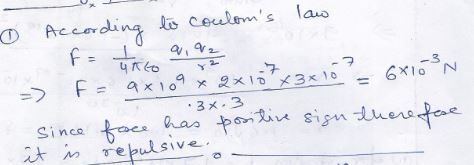
Questions-2
Calculate……………….by ……m.
Answer -2

Questions-3
Calculate……………….by ……m.
Answer -3

Questions-4
The mutual…………………sphere.
Answer -4
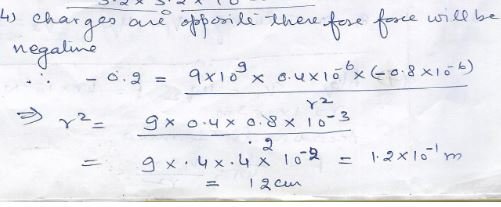
Questions-5
How……………proton.
Answer -5
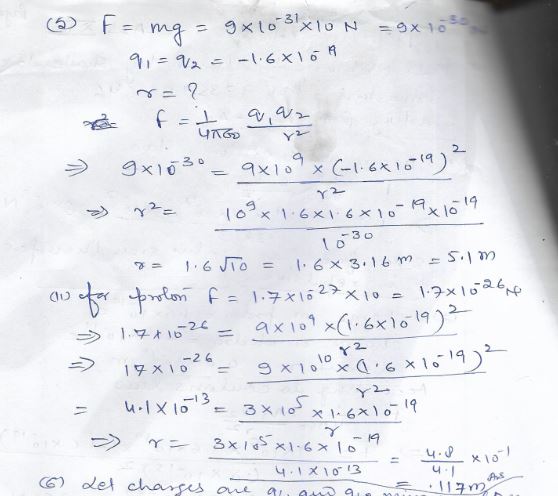
Questions-6
Two positive…………..separate value.
Answer -6

Questions-7
The distance………….separately. the charge……is .
Answer -7
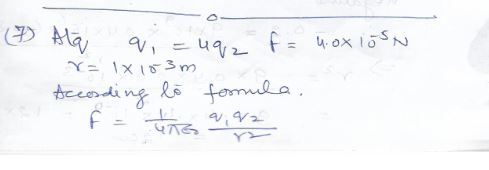

Questions-8
Two point……………..new force.
Answer -8
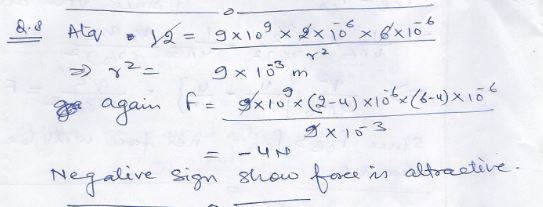
Questions-9
Two identical……to earth.
Answer -9

Questions-10
Two similarity…………….on C.
Answer -10
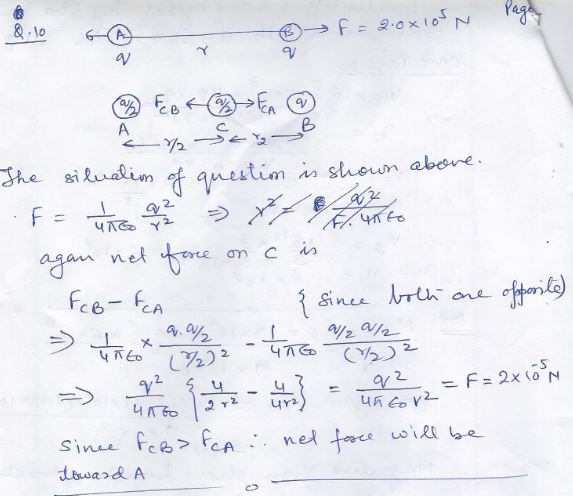
Questions-11
Two conducting………….force on C.
Answer -11
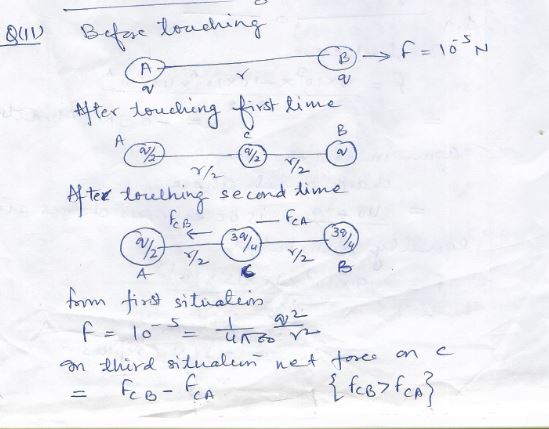
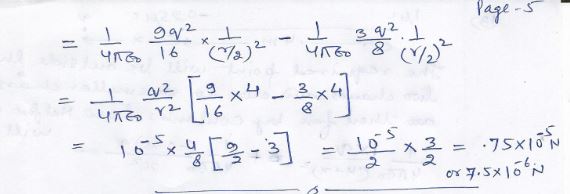
Questions-12
In the adjoining……………….force on B.
Answer -12
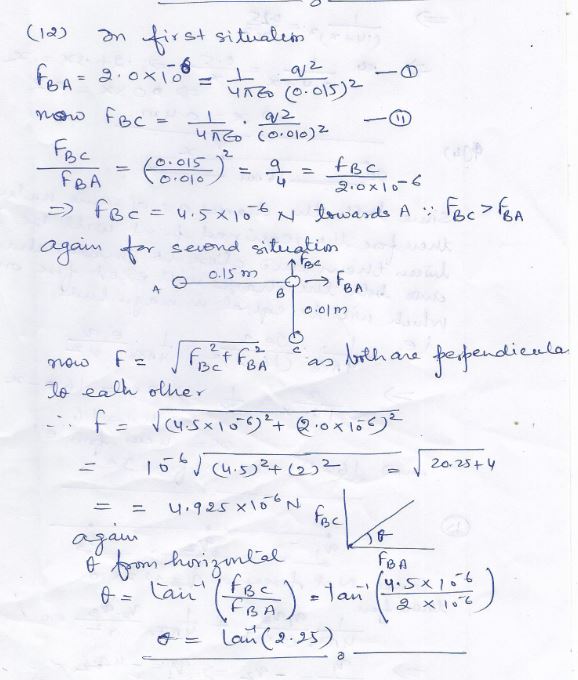
Questions-13
two point……………..upon it.
Answer -13
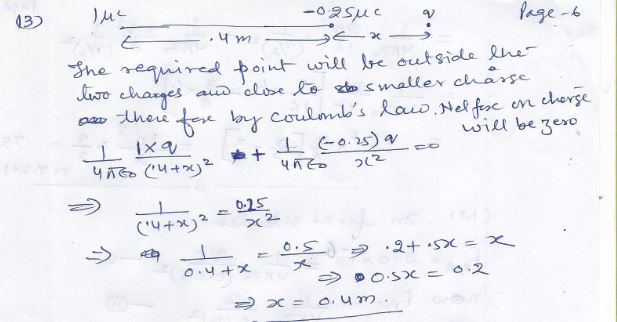
Questions-14
Two point charge……………equilibrium.
Answer -14
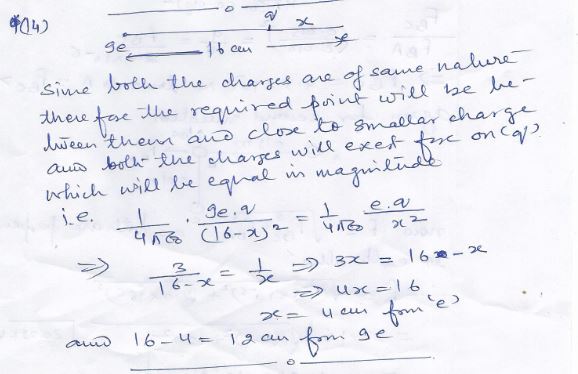
Questions-15
Three point charge………..is zero.
Answer -15
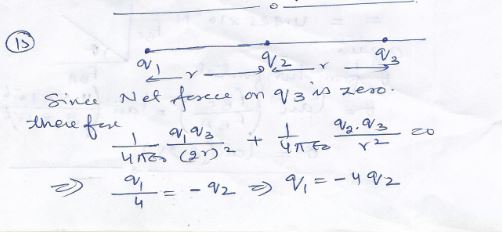

Questions-16
ABC is an ……………….Placed at A.
Answer -16
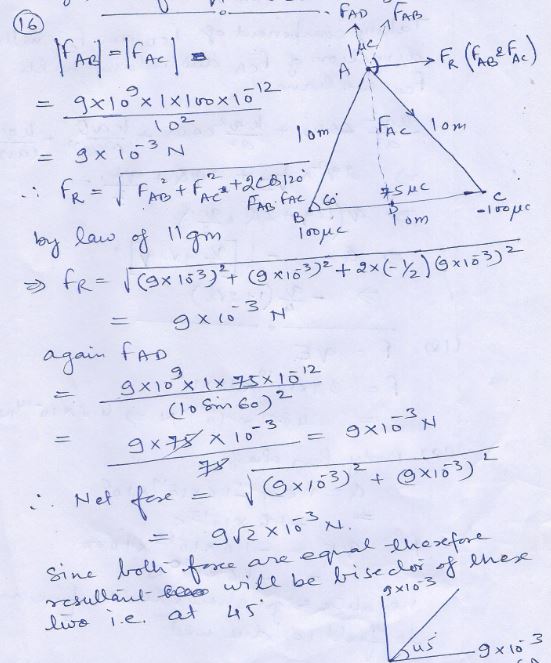
Questions-17
At each ……………..in equilibrium.
Answer -17
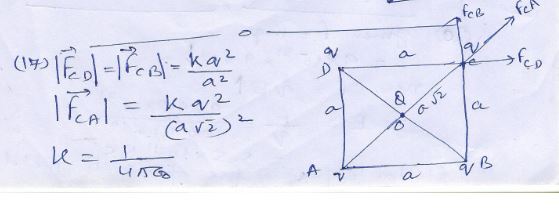
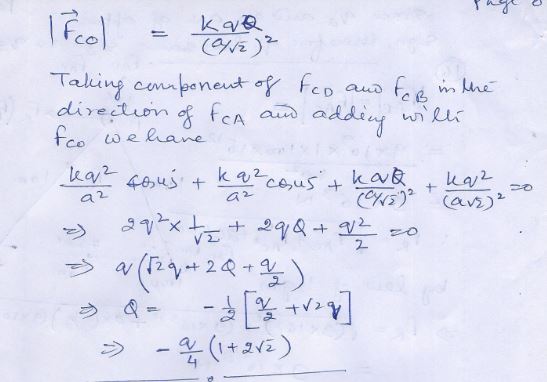
Questions-18
An alpha ……………..on the particle.
Answer -18

Questions-19
A body……………on the body.
Answer -19
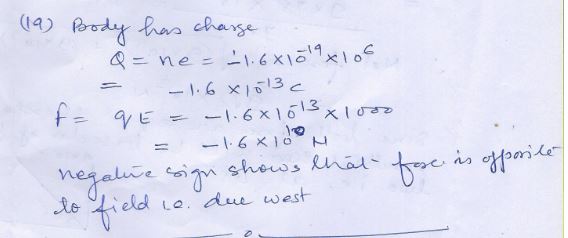
Questions-20
What will be ……………proton.
Answer -20
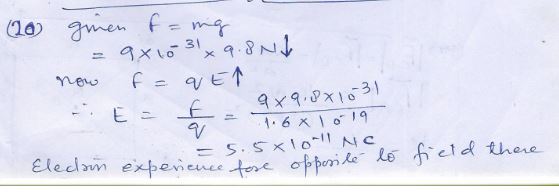

Questions-21
Calculate the…………..from the nucleus.
Answer -21
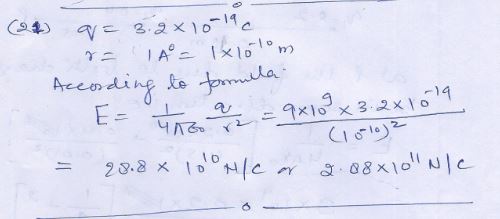
(page -41)
Questions-22
Two point…………….line joining q1 to q2.
Answer -22

Questions-23
Two point charge…………….away from q1.
Answer -23

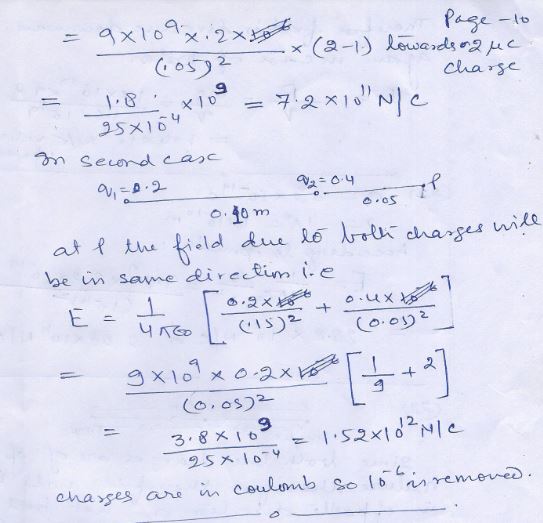
Questions-24
Two point charges…..field is zero.
Answer -24
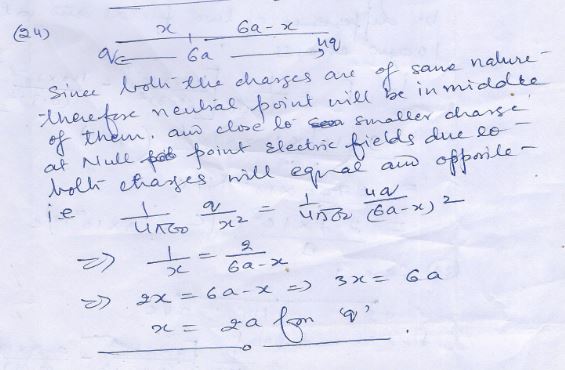
Questions-25
Electric charge…………..each charge.
Answer -25
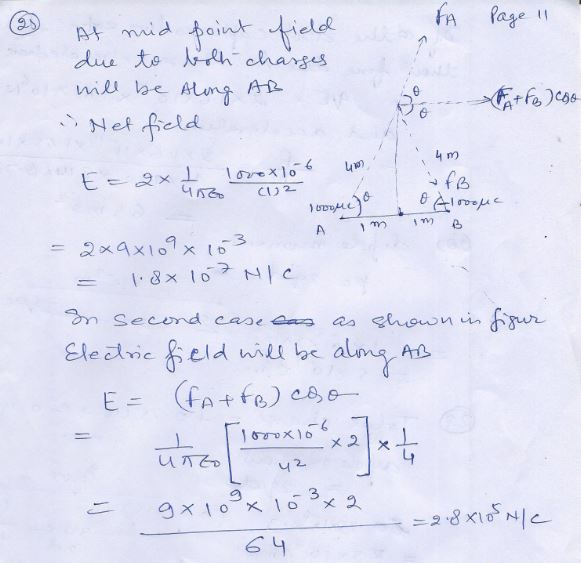
Questions-26
A Stationary ………….on the drop.
Answer -26

Questions-27
A Charge drop……………….viscous drag.
Answer -27

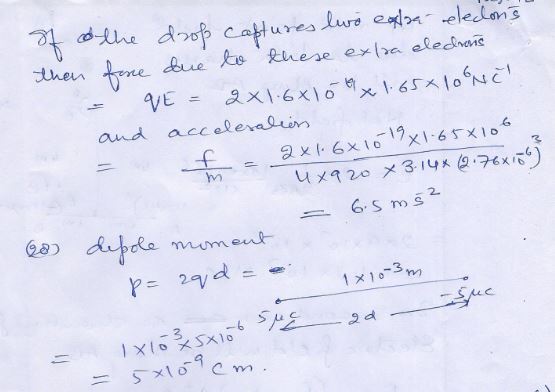
Questions-28
Two charge………….dipole moment.
Answer -28
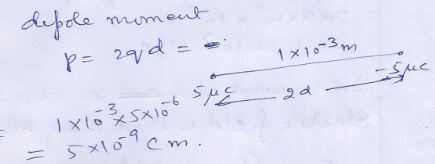
Questions-29
A system has…………..of the system.
Answer -29
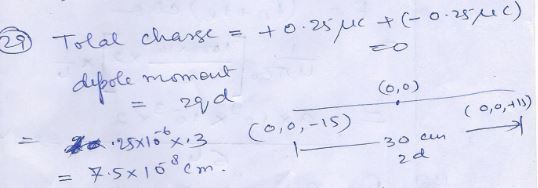
Questions-30
Two charge ……….of the field?
Answer -30

Questions-31
Two point Charge……….how much.
Answer -31
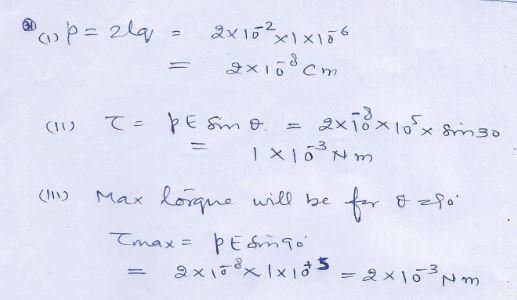
Questions-32
An electrical dipole……………moment of the dipole.
Answer -32

Questions-33
Two point Charge………..acting on it.
Answer -33
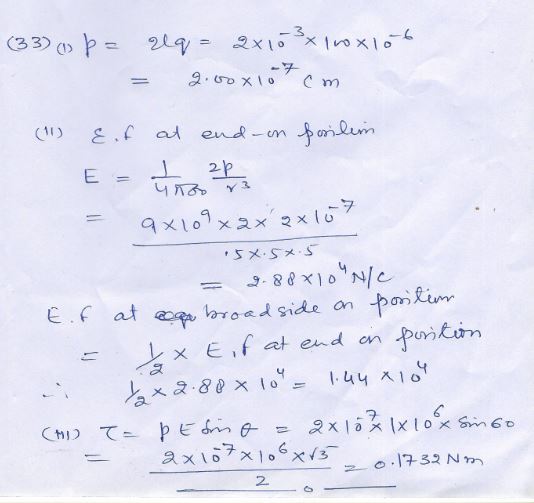
— End of Electric Charges and Fields Nootan Solutions :–
Return to – Nootan Solutions for ISC Physics Class-12 Nageen Prakashan
Thanks

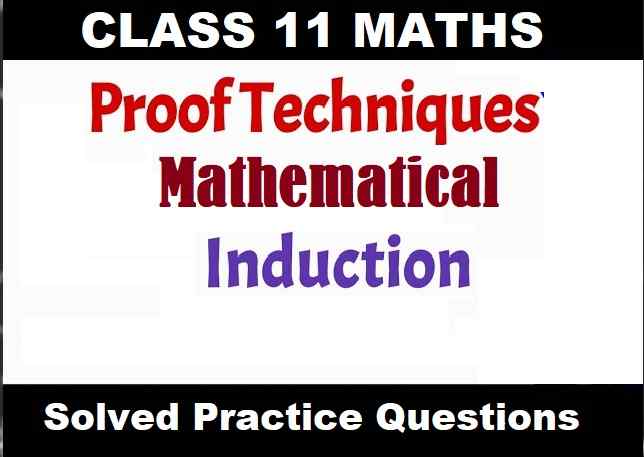
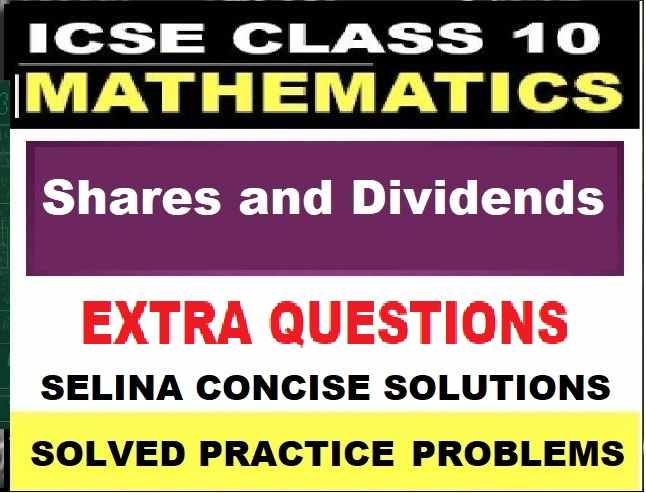
Sir solutions are written by pen which is dull i.e, not very clear so if you can then please try to upload solutions with computer printing.
computerise solutions are not possible currently. our preference to provide solutions of isc maths physics and chemistry as soon as possible. no any site provide such same to same solutions of ISC text book even your suggestion has been registered for future.
Sir, Thank You so much for posting all of these <3
They've been really helpful 🙂
Thanks a lot
R u also providing for chemistry and last chapters of physics
Last chapter of physics will be uploaded soon
thanks
team icsehelp